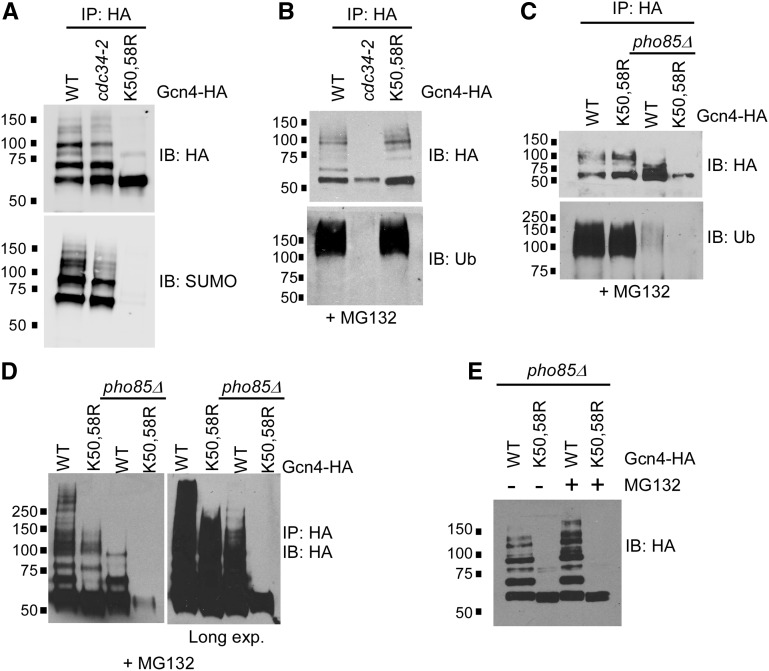Figure 3.
Gcn4 sumoylation promotes further modifications that are stabilized by blocking the 26S proteasome. (A) HA and SUMO immunoblot analysis of HA IPs of Gcn4-WT from CDC34 (WT) or cdc34-2 strains, or from a Gcn4-K50,58R-expressing strain, as in Figure 1A. Strains analyzed are ERYM663, YAA002, and ERYM664F. (B) HA and ubiquitin (Ub) immunoblot analysis of HA IPs from strains expressing WT, cdc34-2, or K50,58R forms of Gcn4. Cultures were treated with MG132 prior to induction with SM as in Figure 1A. Strains analyzed are ERYM663, YAA002, and ERYM664F. (C, D) HA and Ub immunoblot analysis of HA IPs of Gcn4-WT or Gcn4-K50,58R from PHO85 or pho85Δ strains. Cultures were treated with MG132 prior to induction with SM as in Figure 1A. Two exposures of a higher resolution HA immunoblot of immunoprecipitated samples derived from the same strains appears in (D). Strains analyzed are ERYM663, ERYM664F, ERYM665, and ERYM666. (E) HA immunoblot analysis of HA IPs of Gcn4-WT or Gcn4-K50,58R in pho85Δ strains either mock treated, or treated with MG132 prior to induction with SM as in Figure 1A. Because pho85Δ strains grow slowly, cultures analyzed in (C–E) were not necessarily matched for cell density, which can result in variable of Gcn4 expression signals. Strains analyzed are ERYM665 and ERYM666.

